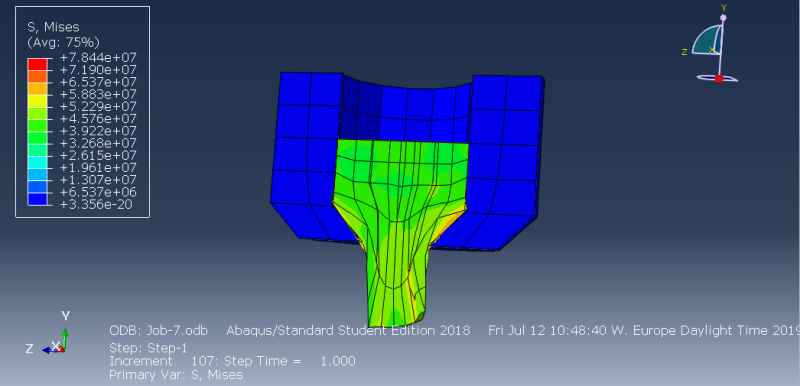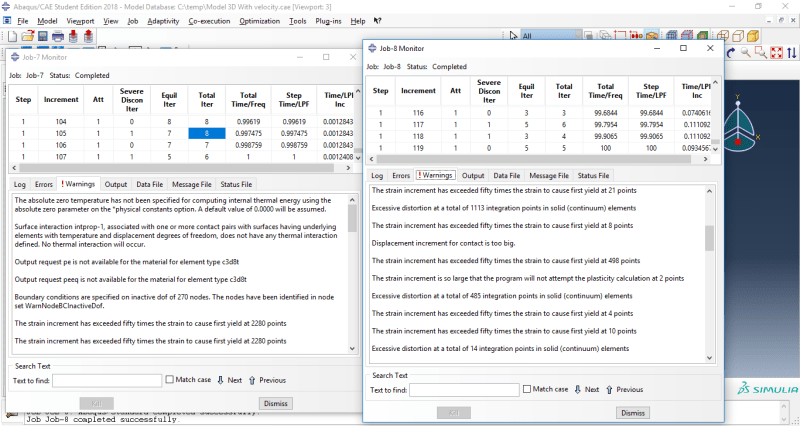Jay Prajapati
Mechanical
Hello,
I'm doing plastic extrusion simulation in ABAQUS. so my die is of brass and Billet is of ABS material.
I have Thermal conductivity, Density, Specific heat, youngs modulus, poissions ratio, Coefficient of thermal expansion for both material.
1) Do I need more properties for both ?
2) Is plastic strain is required for Billet as it is plastic?
3) Do I need to give "thermal conductance" in interference Properties for heat transfer? or Thermal conductivity of both material is already given so no need to give thermal conductance.
4) my flow should be transient or steady flow?
I'm doing plastic extrusion simulation in ABAQUS. so my die is of brass and Billet is of ABS material.
I have Thermal conductivity, Density, Specific heat, youngs modulus, poissions ratio, Coefficient of thermal expansion for both material.
1) Do I need more properties for both ?
2) Is plastic strain is required for Billet as it is plastic?
3) Do I need to give "thermal conductance" in interference Properties for heat transfer? or Thermal conductivity of both material is already given so no need to give thermal conductance.
4) my flow should be transient or steady flow?


